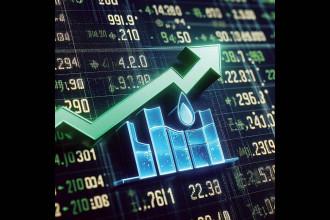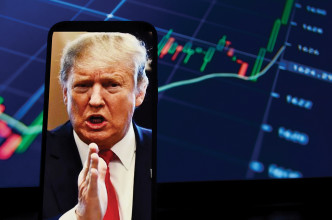
The Middle East, a region long regarded as the geopolitical fulcrum of global energy and a sensitive node in the commodities market, is once again witnessing escalating tensions; this time between Israel and Iran. The conflict which has unfolded in a series of military escalations, cyberattacks and proxy battles has already had a significant impact on key global commodities, particularly gold and oil. As traders and analysts navigate these uncertain waters, it is clear that the direction of this conflict will significantly shape the trajectory of global commodity markets in the months to come.
A brief background
The roots of the Israel-Iran tension go back decades, underpinned by ideological, political and strategic hostilities. Iran’s staunch opposition to Israel’s existence, coupled with its support for proxy groups like Hezbollah in Lebanon and Hamas in Gaza, has placed it in confrontation with Israel’s national security. Conversely, Israel has consistently regarded Iran’s nuclear ambitions as an existential threat, leading to periodic covert operations, cyber sabotage and military strikes on Iranian assets across the region.
In April 2024, this simmering tension reached a boiling point. After years of indirect confrontations, Iran launched direct missile and drone attacks on Israeli territory, a first in modern history. Israel retaliated with a series of coordinated airstrikes deep within Iranian infrastructure, including key military and nuclear facilities. This military escalation has raised alarm bells globally, with fears of a full-scale war between the two regional powerhouses.
Gold and oil react
Whenever geopolitical instability arises, the commodity markets are typically the first to react. In this case, both gold and oil have shown sharp, almost immediate, volatility.
Gold: The safe haven rally
As a time-tested hedge against geopolitical risks, gold prices surged shortly after the initial Iranian attacks. Investors worldwide flocked to the yellow metal, seeking refuge from a potentially expanding war in the Middle East. Central banks, particularly in Asia, also stepped up their gold purchases, anticipating prolonged uncertainty.
Historically, gold has served as a barometer of fear and instability. The Israel-Iran conflict, given its potential to drag in global powers like the United States, Russia and even China, has added a layer of unpredictability that pushes investors toward safer assets. Should the conflict continue or expand into a wider regional war, gold could likely break past its all-time highs, especially if inflationary pressures and currency volatility accompany the geopolitical storm.
Oil: Risk premium reignited
Oil markets have been even more directly affected, owing to the central role the Middle East plays in global energy supply. Within days of the first missile exchange, Brent crude spiked above $100 per barrel for the first time in nearly two years. The Strait of Hormuz, through which nearly 20% of the world’s oil passes, sits precariously close to Iranian territory, and any threat to its functioning causes instant shockwaves in the market.
The fear of Iranian retaliation such as attacking oil tankers or disrupting maritime traffic, has increased the geopolitical risk premium attached to oil. In addition, Israel’s potential strikes on Iranian oil infrastructure or regional allies like Syria or Iraq could result in temporary supply disruptions, further tightening the market.
What if the conflict escalates further?
Should the Israel-Iran war expand – either through confrontation or via the activation of Iran’s allies across Lebanon, Iraq, Syria and Yemen – the ramifications on global commodity markets could be significant and prolonged.
Oil supply shock scenario
A worst-case scenario would involve Iranian attempts to close or obstruct the Strait of Hormuz. While the US Navy and allied forces would likely intervene, even a temporary disruption could lead to a supply shock, sending oil prices soaring to $130-$150 per barrel. Such a spike would have cascading effects on global inflation, energy costs and transport logistics, especially for developing nations like Nepal, which rely heavily on imported fuel.
Furthermore, higher oil prices would slow down global economic recovery, increase the cost of doing business, and possibly trigger monetary tightening in economies already struggling with post-pandemic debt burdens.
Extended gold rally
In a prolonged conflict, gold could emerge as the top-performing commodity. With global central banks already maintaining high gold reserves due to previous geopolitical tensions with Russia and China, any deepening of the Middle East conflict would reinforce this trend. Investors would likely continue to move capital away from equities toward gold, especially if the war undermines regional stability in Gulf Cooperation Council (GCC) countries and impacts the global energy framework.
Looking ahead: Navigating market uncertainty
For now, the global commodities market remains on edge. Oil-producing nations may benefit from higher prices but the long-term consequences of sustained war i.e. supply disruptions, capital flight and global inflation, would weigh heavily on the global economy. On the other hand, gold will likely continue its upward trajectory as long as the threat of war looms.
For policymakers and investors alike, vigilance is key. Hedging against further volatility, diversifying commodity exposure, and monitoring diplomatic channels between regional and global powers will be crucial. The hope, of course, remains that diplomatic intervention will halt the escalation. But if it does not, the ripple effects on gold and oil markets will be profound, reminding us once again of how interconnected geopolitics and commodities truly are.






